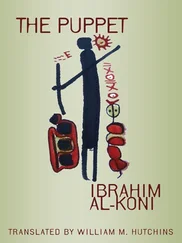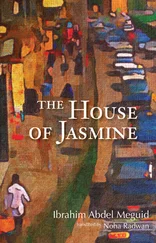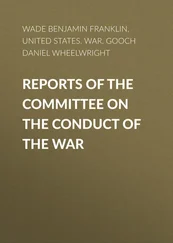"Thus I arrived at a starting point-how to determine a method suitable to explain all the phenomena separately and in relationship to each other."
They pricked up their ears. I understood I had fully aroused their curiosity, so I continued, "I devoted myself to trying out all the familiar approaches without getting anywhere. That very day I was thinking about this when I said to myself, `The problem with these phenomena and mysteries is that they are not related to just one facet of life, but extend through diverse facets. This means that multiplicity is the common denominator.'
"Here I remembered one of the important conclu- sions I had arrived at in my research on the Doctor, that is, his participation in the development of the Arabic language by coining new meanings from common words, among them the unique term `diversification.' In this I found my goal."
The obese member spoke for the first time. He had been wearing a white jacket at my first interview and had now changed it for one of red velvet. He said, "Could you give us an example of what it means?"
I arswered, "I was just about to do so. As my example, I will take a subject known to us all, Coca-Cola. Many obscure phenomena are linked to the evolution of this well-known beverage.
"For example, I read of a far-reaching crusade launched in 1970 in the United States over the mistreatment of a quarter million migrant workers on farms controlled by Coca-Cola. I mean farms, not factories. This crusade spread to television and from there to Congress. Senator Walter Mondale, at that time a member of the Committee for Migrant Workers, summoned the p_esident of Coca-Cola to answer officially, before the United States Senate, the accusations levied against Coca-Cola.
"Not three years later, the president of Coca-Cola participated in selecting that same Mondale for membership in the Trilateral Commission I told you about in our first meeting. Then he selected him as vice president to President Carter.
"At the same time as Coca-Cola was accused of the theft of a handful of dollars from its workers, we read that it dedicated vast sums for charitable and cultural works ranging from an entire university budget to an important prize for artistic and literary creativity. It also presented a huge grant to the Brooklyn Museum in 1977 to rescue Egyptian pharaonic antiquities from collapse.
"Coca-Cola, according to statistics for 1978, distributes two hundred million bottles of soft drinks daily throughout the world, leaving tap water as its only rival. So, now we see it sponsoring projects for the desalinization of sea water, relying on the Aqua Chem Company that I bought a few years ago, in 1970 to be precise.
"These contradictions confused me, so I did several studies on Coca-Cola. Its policy was to remain committed to the two basic principles set down by its great founders. The first principle was to make every participant in the Coca-Cola enterprise rich and happy. The second was to restrict its energies to creating a single commodity: the well-known bottle.
"But the winds of change that blew in the early '60s forced a choice between the principles. In order not to sacrifice the first, Coca-Cola preferred to diversify its products. It began by producing other types of carbonated beverages, then extended its interests to farming peanuts, coffee, and tea. It had extensive holdings in that same state of Georgia where it was founded. Its farms neighbored those of the American president Carter, which perhaps was behind its involvement in public affairs, both domestic and international, and thus its policy of diversification grew all out of proportion.
"Obviously, this policy couldn't help but be successful. In this regard, it is sufficient to mention the return of the familiar bottle to both China and Egypt through the initiative in both countries of brave patriots, who acted on their principles.
"However, this success produced a strange phenomenon. With modern methods and lower production costs gained by relying on poorly paid migrant workers, Coca-Cola became the largest producer of fresh fruit in the Western world. But, sadly, it found itself forced to dump a large portion of the yield into the sea to keep the worlc market from collapsing.
"There was no solution to this problem except to continue diversifying. Coca-Cola exploited its great assets and expertise in the field of agriculture by sponsoring many nutritional programs in underdeveloped countries, among them a project to farm legumes in Abu Dhabi, undertaken by its subsidiary, Aqua Chem. Likewise, it extensively researched the production of drinks rich in proteins and other nutrients, thereby compensating consumers for the surpluses it had been forced to dump in the ocean."
I stopped a moment to catch my breath, then continued, "Thus, your honors, you see how diversification provides-in the case of Coca-Cola-the key to unraveling most of the phenomena linked to it. Through research, I found that this key can open many other locks.
"Indeed, a single look at the Arab reality is enough to prove I am telling the truth. Right off, this reveals to us the phenomenon of diversification in the outer trappings of regimes (and this is certainly by design, because the essence of these regimes does not differ). It is also revealed in the forms of political participation and the corresponding slogans and goals.
"At one time all these regimes had applied one unchanging means of persuasion to their people: imprisonment and torture. But diversification added other sophisticated methods, from termination to television to parliamentary councils.
"Once, all these regimes had espoused standard, unchanging slogans. But they finally grasped the importance of changing these slogans and diversifying their goals, alliances, and enmities from time to time.
"Due to the policy of diversification, this country's network of alliances, which were restricted in the past to the rest of the Arab peoples, were extended to now include the friendly country of Australia.
"Because of this policy, the Egyptians received plenty of the American, English, French, Italian, and German armarnents that had long been withheld. In the '60s, the Egyptian market had been restricted to a single car, the Nasser/Fiat, which was assembled in local plants. Now, various imported makes of cars flooded into the marker, arriving directly from their home factories.
"Formerly, housing projects, uniform in size and design, had been limited to the poorer classes. Now, they were offered to all classes, and acquired the utmost diversity, evolving into everything from tombs to luxurious high rises.
"The Egyptian cigarette is appropriate as a model for displaying and explaining the various, sometimes obscure, phenomena that accompany very complex processes such as diversification. You know, I'm sure, the strength of habit and the power of addiction. The Egyptians' devotion to their domestic brand reached a peak during the '60s, when imported cigarettes were banned. It was possible to merge several domestic brands into one, known as the Belmont, which satisfied a large proportion of the consumer market.
"This merger was the obstacle diversification faced in the cigarette industry. Overcoming it required exhaustive efforts along various lines. As a result, there were more periods when the Egyptian cigarette suddenly disappeared, and the consumer was forced to search for a foreign substitute.
"We can easily consider the shock of this sudden forced switch a cause of mental depression, especially since foreign cigarettes sell for twice the price of the local ones.
"Since the consumption of cigarettes in developing countries is more widespread than in other countries (the latter have forbidden advertising in order to alert their citizens to tobacco's link with cancer and now offer a variety of pleasures as alternative), the resulting depression is deeper and harder to treat, which causes foreign drug companies to recommend higher doses of powerful antidepressants for people in developing countries.
Читать дальше











